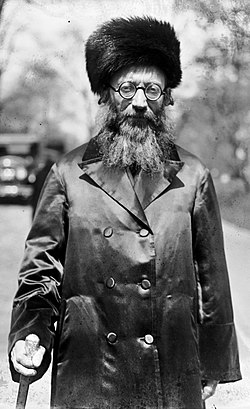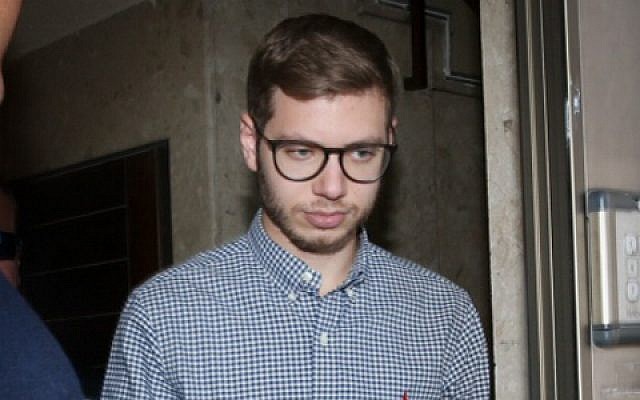 In the worst-case scenario, we ignore this potpourri of possibilities, perhaps perplexed by their scale and breadth. Rather than diving head-first into something, we escape from it all to the safety of the also unlimited spectrum of time-wasting options at our fingertips. Surely that is an trap into which we all fall from time to time. But we also engage in the positives as well, learning a new subject, studying this or that; trying a new class or a hobby. We find ourselves dabbling – a bit of this, something of that, without really specializing in any one area or interest. Today, the world presents with an infinite array of options ready for the taking, making each of us dabblers in everything, but masters of none.
In the worst-case scenario, we ignore this potpourri of possibilities, perhaps perplexed by their scale and breadth. Rather than diving head-first into something, we escape from it all to the safety of the also unlimited spectrum of time-wasting options at our fingertips. Surely that is an trap into which we all fall from time to time. But we also engage in the positives as well, learning a new subject, studying this or that; trying a new class or a hobby. We find ourselves dabbling – a bit of this, something of that, without really specializing in any one area or interest. Today, the world presents with an infinite array of options ready for the taking, making each of us dabblers in everything, but masters of none.In his commentary on Gemara Berachot, Rav Kook writes that while a little knowledge in many areas represents one possible path, it is certainly not ideal. The Gemara in Berachot (39b) in the context of making Berachot on bread, mentions an interesting fact about how Rav Ami and Rav Asi chose which bread to use for their Seudat Shabbat.
רב אמי ורב אסי כי הוה מתרמי להו ריפתא דערובא מברכין עליה המוציא לחם מן הארץ אמרי הואיל ואתעביד ביה מצוה חדא נעביד ביה מצוה אחריתי (ברכות לט ע"ב)Rav Kook (Ein Ayah Berachot vol. 2 p. 12) sees in this passage an important message about specialization. He writes that in our pursuits throughout life we can choose one of two general paths: Completion through Quantity (sheleimut b’kamut) and Completion through Quality (sheleimut b’eichut)."Rav Ami and Rav Asi, when the opportunity to use the bread of the eiruv in the Shabbat meal would present itself, they would recite: "Who brings forth bread from the earth" over it. They said in explanation: Since one mitzvah was performed with it, we will perform another mitzvah with it."
השלימות בכמות היא שירבה נמצאים מושלמים אע"פ שבכ"א לא יהי' כ"א השלמה מועטת...והאיכות היא שישתדל שמי שראוי מהנמצאים לקבל השלימות ישלימהו כפי האפשרי ברב יתרון, ומהשלמה של אחד בתכלית המעלה ימשך טוב לרבים.In other words, we can strive to improve a small amount in many different areas or we can ignore most areas of study and choose to focus our efforts and energies on one specific area or endeavor, striving to be the very best we can be in that one discipline. Which then is better: quantity or quality? Should I strive to be a “jack of all trades” or a “master of one”? To Rav Kook, the answer is clear: Quality over quantity.“Completion through quantity Is that a person will increase his areas of completeness even though in each area he will only realize a small measure of completion…[Completion through] quality refers to the effort to focus on the most worthy of attributes to strive for completion – in that area he will achieve fulfillment to the greatest possible degree…”
Rav Kook views this matter from an educational perspective as well, noting that educators should focus their efforts specifically on students capable of reaching great heights.והוא כלל גדול ג"כ בכל חכמה ומלאכה, כי שלימות העולם בכללו תבא מריבוי בקיאים כ"א במקצע מיוחד בתכלית המעלה, ולא ממי שסופג הכל רק בדרך שיטחי, כי ההשלמה האיכותית גדולה היא בערכה על ההשלמה הכמותית."This is also a great rule in all areas of wisdom and work; the completion of the entire world will come from a growing number of experts who have achieved the greatest possible excellence in their specific fields, and not from one who absorbs everything in a superficial manner. For completeness in quality is greater in value than completeness in quantity."
Rav Kook's comments must carry great weight as we evaluate our own choices and priorities in life. Are we specialists in a single area, focusing our light and energy to become experts who can shine the greatest possible focused light? Or do we dabble, dispersing ourselves in different directions, but failing to create much light at all?וזוהי הדרך המשובחת שכוננו חכמינו ז"ל להעמיד תלמידים הרבה ולהגדיל תורה בחוג המוסגלים לקבלה ולא לפזר כוחינו בין בתי כנסיות של עמי הארץ. וכן בכללו ישראל, להרבות עצמה בתורה ויראת ד', ולא לנוד להאיר עמי הארץ וגוים רבים באור ד' בדרך מועט שיכולין לקבל. כי מריבוי האור שיזרח בשלמים הגמורים יאיר אור גדול ג"כ על שאינם שלמים, אבל בהשתדלות לפזר הכוחות על הרבה נושאים, וכ"א לא יהי' שלם בתכלית, לא יבא לעולם אל מטרה נכונה."[Completeness of Quality] is the praised path established by the Sages who said to 'Establish many students' (Avot 1:1) and exalt the Torah among those who are capable of receiving it, and not to disperse our energies among the synagogues and simple people…for the greatness of the light that spreads from individuals that are whole and complete will shine on those that are less complete. On the other hand, the effort to disperse our energies in many areas so that we achieve wholeness in any one area will not bring us to the correct goal. "
In education, society has clearly chosen to reject Rav Kook's priorities. In our community, we don't focus only on the diamonds who can achieve greatness. Instead we strive to reach each and every child. The Chareidi community makes a different choice, gearing its educational system specifically towards those who can thrive and achieve greatness. Each system has benefits, but also brings great costs as well. It is incumbent upon our community to at least wonder what costs we pay for rejecting Rav Kook's position by choosing a different educational path.




